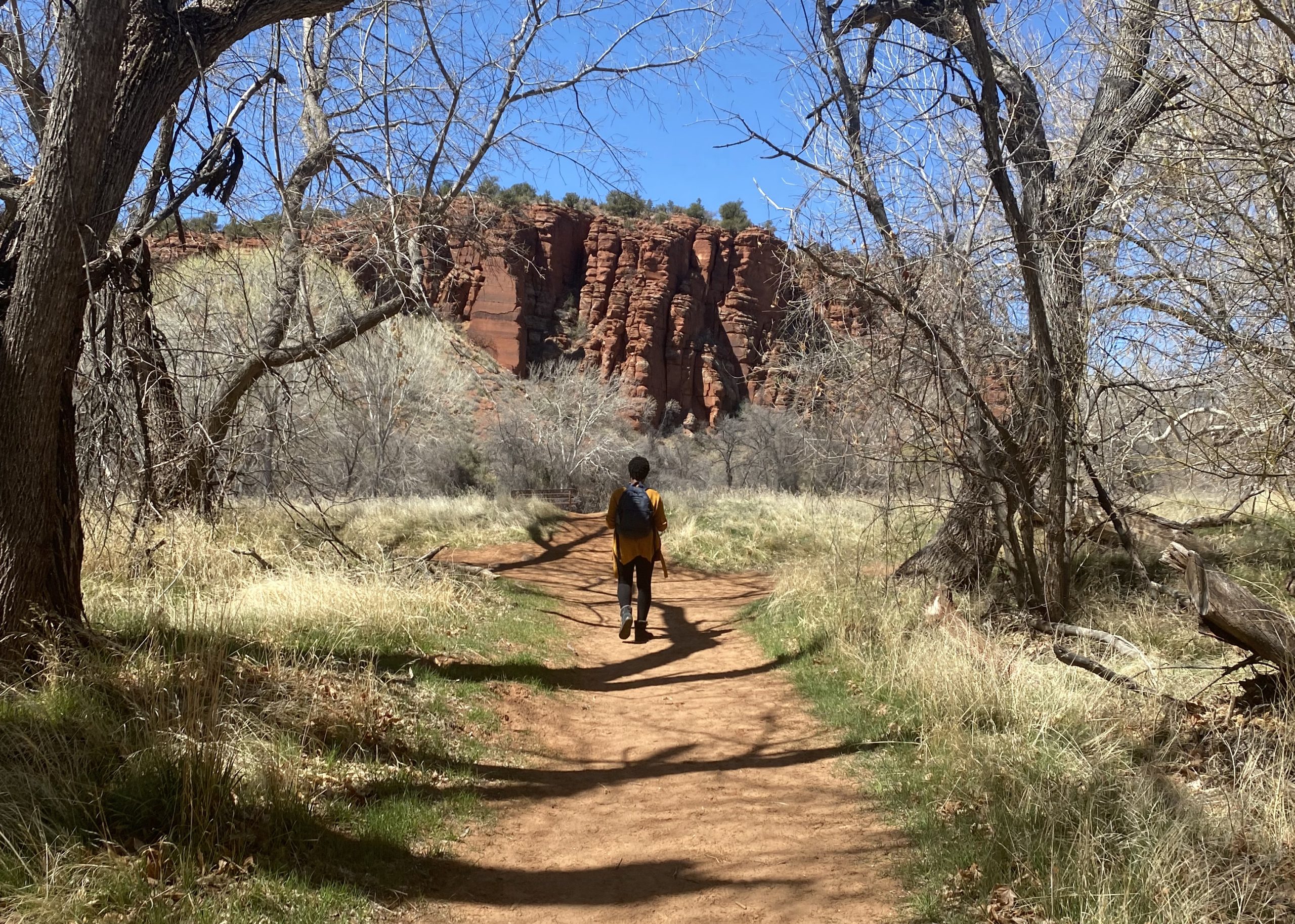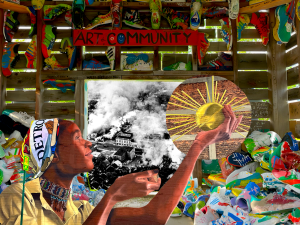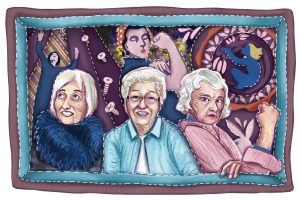The following is an interview with and reflection by Lauren Williams, originally published on MDW Atlas in August 2022 and edited by Mairead Case of MDW Fair and guest editor Tempestt Hazel from Sixty Inches From Center.
During a conversation with my therapist about my challenges when writing about my work-related experiences, she told me that my body possibly resisted the process, and, instead, suggested that I record myself speaking or talking with a friend. After attempting again to put on paper what life in Chicago’s nonprofit arts sector has been like for me and not feeling confident in sharing still too tender traumas, it was Tempestt who suggested interviewing me for this publication.
The following is part of that conversation, edited for clarity and length.
Tempestt Hazel: Looking back to the summer of 2020, what was going through your mind as these different reckonings were happening locally and nationally on many fronts, but especially in the arts?
Lauren Williams: I remember I was working at Threewalls, managing the Propeller [Fund] grant. At the time I was feeling depleted, I was feeling tired. I didn’t really know what to do about anything, I was simply trying to work. I was feeling the weight of a lot of the experiences [I was having]. I don’t have and haven’t had a lot of financial security–I haven’t ever. But I felt even more strange [at the time] because I was working part-time. On one hand, it was a well-paying part-time gig, but I didn’t have most of the resources [I needed], like insurance. So, I was working a lot and I was tired, so I don’t know how attuned I was to what was happening outside of that.
Also, the racial reckoning that other people are coming to terms with, Black people are and have always been thinking about it. These are things that have always been on my mind and also a part of my life experiences. And my work has always been directly related to it.
So, I just remember in 2020 being very tired and depleted. I had worked several jobs and different jobs at the same time. From where I am now, I see that I was almost at a breaking point at that time.
TH: I think you’re speaking to where a lot of folks were at the time. When I think back to 2020, I was in a similar place already. It begs the question of what do you do when you’re going into a period where you need to gather all the strength you have to be present for an environment where even more things are being demanded of you, whether emotionally or through action. How do you go into that when you’re already tired? For me, it also brings up questions about expectations for things that we hoped would happen or be dismantled. How was the bar lowered? How was the bar raised?
LW: I think we can say it now. There was a reckoning happening, but in the midst of it, people were still, to an extent, going about their day-to-day lives. Sometimes you’re just doing the best you can to get through things.I was having a personal reckoning. I was asking myself what could I take? What was I doing? Where do I need to be? I think all of those were thoughts that were heightened in 2020, thoughts that had already been looming.
TH: Is there a point when you became more aware of some of the actions and conversations happening within the arts?
LW: Certainly. At the time, I was preparing the inaugural emergency grant–I can’t remember if it was called an emergency grant as it related to my role managing the Propeller Fund. It was part of the grants that organizations and foundations were producing to respond to the insecurity that the pandemic created for artists in particular. I remember that work being very different [from the work I was doing] and specific to the pandemic. It’s always strange to be preparing something that you also could really benefit from having access to–and writing about and trying to define need. And defining eligibility for need. Those were frustrating experiences because I was in need. I needed financial support and I was stressed out for the exact same reason that this demographic of artists was. Working in a field, specifically museum or art education, makes it difficult to find these kinds of opportunities for support. I specifically work in engagement. So, at the time, I was thinking a lot about how I felt as a working arts administrator who was struggling, because at the organization we were constantly talking about how to support artists right now. I felt like that exact group of people [who needed to be supported].
TH: And that’s something we don’t talk about very often until someone living those situations talks about it, or we see people organizing–like museum workers (MCA Accountable, Art Institute of Chicago Workers United, or teachers and teaching artists). It’s not often talked about or realized that the support system that is created is largely maintained by people who, themselves, need to be supported.
And these things are often only visible within certain parts and levels of the organization, depending on salary or job position. It’s interesting, too, because what Kate writes about is exactly that–how we’re explicitly or implicitly told that it’s a rite of passage to experience things like being overworked and underpaid or trading your labor for intangible, unsustainable costs. And the hope is that, one day, you’ll reach the other side of that where you’re paid what you need in order to survive. There’s sometimes a false perception that things are a particular way when they aren’t.
LW: Some of it comes with having a college degree and being in a “professional” setting. And being around people who are earning more than you are. It creates a false security and [belief that financial security will eventually] be my circumstance. I’ve been working in the arts for sixteen years, and [being a low wage worker] has always been my circumstance. And I want to fight against the notion that I kept myself here, as a low earner and someone who has always struggled to make ends meet. I fight against thinking that’s something I’ve done to myself. When the arts as a whole talks about it, they don’t place blame on the artist for being poor. They want the artist to produce art. The hope is that these opportunities–for better or for worse–will provide artists with what they need to create. But within the same institution , it is the worker’s problem for not being able to access a different life for oneself. I definitely struggle with that all the time.
TH: If I were to describe your work with Sixty, I would say that most of it focuses on a lot of different things, but mainly institutionalizing Sixty’s values, the ones we’ve practiced and held since we were founded but only put down on paper a few years ago. You’re helping to make sure they’re infused in everything that we do. You’re also a masterful relationship nurturer–you strengthen the culture and how we work together as a team. I’m wondering, do you see that work as related to the era we’re in within the arts right now.?
LW: It’s definitely something that I’ve always thought about when doing my work [even before 2020]. I don’t know if this work is related to what other arts organizations or the sector is thinking about. My gut says it isn’t in an intentional way [for many organizations]–though I don’t like the word intentional sometimes. I work slowly. People who know me know that. I take my time with things, sometimes because I’m afraid of it or overthinking, but sometimes it’s just part of my process. As it relates to relationship building, that’s slow. There’s no shortcuts and I don’t think the arts generally desire to engage in processes that take time. [The arts is focused on things that are] very program-centric and about preparing for the next thing. So something as nebulous as relationship-building and trying to find ways to create mutual benefit is not something that is very thrilling in the arts, generally. So, no, I don’t think the work I’m doing at Sixty is really taking place in most places. And I don’t say that because I think those qualities are specific to me. I just think it takes an organization as a whole deciding that it wants to be something–not just inserting a quality here and there. It needs to want to be a whole other thing, operate as a whole other thing. It takes decisions like that for me to believe that there’s true investment in something that isn’t simply related to an event, program, or project.
TH: Related to that, how do you feel your work with Sixty has impacted your thinking around nonprofits and what they can or can’t do?
LW: Sixty is becoming more fully a worker-led nonprofit. That is a process. There are ways to do that that’s related to policy, practice, philosophy, implementation, and obviously a lot of admin. But it’s not as simple as any one area. There is room and possibility for nonprofits, but there are also possibilities for a framework that isn’t at all related to nonprofits . I think we [Sixty] are using the nonprofit in a way that is closer to who we want to be, but there’s also room for organizations to be altogether something else. There’s room for other forms that look nothing like this. I’m curious about them all because what I realized after working in so many nonprofits, especially as someone who embodies much of what has been excluded, the structure is never going to feel right for someone like me who is more of an organizer, a Black woman, with a museum education background as as opposed to curatorial. Also as someone without an arts practice. My experience in the arts is made up of what the institution has resisted. I recognize the kind of arts worker I am now. After being in those spaces for so many years, today I’m invested in structures that are slightly different in conception. Worker-led nonprofits are still nonprofits, so there are still some aspects of hierarchy that are a struggle. [But by working to build a worker-led nonprofit] I’m moving away from something that has been an unhealthy and depleting environment for me.
The institutionalization of charity is deeply problematic and has been fraught for me because I’ve had to realize that [I’m not the problem], but this is just a space that isn’t suited for me. The work in Sixty is much more aligned with who I’ve always been but haven’t been able to be. Considering different ways of doing something has always been my tendency. And when I’ve voiced my observations or have tried to move forward ideas [I’m met with] the reality of satisfaction in the bare minimum which limits new ideas from moving forward.
[A worker-led nonprofit] is not perfect–that’s not the goal–but this space relieves me of the kind limitations that I often feel in a nonprofit. I can pursue an idea that is responding to an issue, rather than just putting a balm over something. I really want to work to respond to something in a way that alleviates the challenges off of the people who are most vulnerable to them.
TH: As you’re talking, it reminds me of the way we all think of Sixty–as an organization that seeks to serve itself, meaning the people who are of Sixty. We are our own audience. We are the ones we seek to serve because we represent the communities that we seek to serve. So, we’re doing what we do for us–across all lines of race, queerness, economics, etc.
LW: The biggest problems that I’ve had in nonprofits as a coordinator, I can’t voice my challenges with the institution because the priority is preserving the institution. And that doesn’t really happen in Sixty, and if it did, someone would say something. It’s not the norm for someone to not be able to communicate something they’re struggling with. So, when you say, “We seek to serve us,” it means that we [have space] to speak up for our own experiences. No one knows your experience better than you and if you can’t voice your concerns or challenges, that would be a challenging environment to work in–though we’ve all been called to work in those kinds of environments all our lives.
TH: In the introduction to this series, I wrote about wanting to use the MDW Atlas space to think through whether what we’re experiencing now in the arts is a moment, a flash that is tapering off, or if it feels more like a movement. I’m curious to hear your thoughts on what parts feel like a moment and which ones feel like a movement, if any.
LW: I think as a whole, there is a movement. There are absolutely going to be aspects that are treated like moments or navigated like moments. Some of those are intentionally [moments]. Some people are taking advantage of this time in ways that are reckless, but there are also people who are simply learning. There are some things that may be perceived as ineffective or small, but people are learning and building. So, I think moments shouldn’t be something that’s dismissed, because a lot of learning is happening when we’re trying to figure out what in the world is going on. I think there’s a mixture in a movement.
TH: I love that so much!
LW: That’s what it feels like for me right now. And I can be open to that. Also, when I moved to Chicago I was definitely jumping into a fad, which was community engagement. That was definitely treated and abused, the word was tossed around so carelessly. Everything was called community engagement. So, I’m sensitive to the ways that something that could be a very good thing is either misused or attached to things it shouldn’t be attached to, or used for funding purposes. But I had to learn, too, that if I wasn’t attached to an organization that recognized the value of community engagement, it was treated like a moment, no matter what my intentions [were for the engagement work]. This is why I say that a lot of it is just learning–some people are putting their best foot forward, but sometimes not in the right place. I believe that was part of my journey, and I’m now on a larger journey to figure out how to apply these thoughts and these skills. There’s something about working within an organization that wants to challenge what it means to be a worker, a contributor, a leader. Those are words [and roles] that we all within Sixty have access to. That feels like a part of my movement, a larger movement that I didn’t know was going to open up for me. I thought I was suppose to be practicing engagement work in spaces that were meant to engage young people in particular, and Black people, which was even more exciting for me. But there’s something different waiting for me when I align my work with workers. I’ve realized over the years that I’m really aligned with workers. As someone who has worked for a longtime in the arts and has also struggled a lot in the arts, I’ve had the ability to see and pay attention to tones of voice when people are trying to communicate what they’re feeling and don’t want to offend. Or when they’re trying to communicate frustration. There’s an access that I’ve always had and I can begin to apply all of the nuances I pick up on in these roles. That feels like a larger movement for me, to see that my skill set is of use in many spaces.
TH: I’m sure a lot of the folks in Sixty would agree that your work has been invaluable to the process that Sixty has been on since around 2018 or 2019. We don’t always get the chance to get a new perspective on the skills we have.
LW: One of the skill sets that I’m learning as your friend and as your colleague is how to really talk about Sixty and to problem-solve with you. That’s different because you perceive me as someone who is doing this with you and not doing this for you or under you. I feel the difference, but I’m still struggling with the process of being in relationship with someone who recognizes me in ways that I’m not fully comfortable with. A skill I really like developing is learning how to be in conversation with a friend about the work. And having honest conversation and difference of opinion, sometimes. During the pandemic, the value of friendship has gone way up. Wanting to protect a friendship at all costs while trying to nurture something together and protect the friendship while feeling depleted–and being afraid to communicate that you’re depleted. There’s something right in that, that’s valuable in me, that I’m learning and struggling through. It’s been important to do it with you.
And learning how to be a friend and colleague in the same sector, as we’re experiencing aspects of visibility differently, I think that’s a skill and something I really want to nurture. I think it’s about learning the people who you want to struggle through certain things with. I know you are one of those people for me. I know and have learned to trust how I feel with you most of the time, I know you care about me and it’s safe. It’s not phony. It hasn’t always been easy but it’s always been worth it. And that in and of itself is a muscle, and I’m working to build that. If you’re going to create something different with people who share your value system, this is part of it. How are we going to work through these things? How are we going to allow ourselves to be different but also come together to create something? There’s something about that practice that matters to me. I think a big reason is because the value of friendship, what friendship means and what friendship truly is, has become very front-and-center during the pandemic. I really want us to do this, I really want a lifelong relationship with you and for this to be one of the things that we’ve done together.
TH: Thank you for saying this. It’s true when it’s said that for things to be different, things must be done differently. I think that’s really important. And that includes deep relationships–and how to maintain a friendship while doing this work, well that’s a whole other conversation. I love what you said before about movements being made up of moments, but the second part of that question is what does change look like or feel like?
LW: I observe change, and I feel it based on the ways the people in the rooms I’m in are experiencing it. I don’t judge it [solely] by my own specific actions–like doing the research behind it and building it. If you’re within an organization, you have to give things time to move, and you have to observe the response to it. You’re trying to see if things are operating differently than they were before. You also need to think about what you’re responding to.
I’m often looking out for what is stifling, or how I can loosen up parts of the process –I’m usually creating something that’s responding to the observations I’m making. Then, as it’s implemented, I’m observing to see whether or not it’s working–and that usually takes time. Change isn’t about me deciding that something has changed because I’ve done it. It really is a lot of observation and time spent doing the thing. And, as it’s happening, shifting it as needed.. Being open to feedback is a really important component to change, too, and being open to adjustments. I measure change based on that. That’s what, to me, feels most right.
TH: If you could snap your fingers and provoke change in the arts, what would your top priorities be?
LW: This is such a hard question. So, I’m from Birmingham and the museum that introduced me to visual art and more formal art spaces was the Birmingham Museum of Art in Alabama. I started going there at three or four years old–my mom was a docent. In the 1950s and 1960s Black people were only admitted on Tuesdays. It was called Negro Day. There was a sign that hung outside of the museum on Tuesdays prior to 1963. Prior to that, the museum had only been open for about twelve years. So, when you ask about what I would change in the arts, I want the arts to know that we, [Black people], weren’t ever intended to be there. We weren’t intended to be in this space. Art itself is wonderful and open to everyone, but museums and those kinds of art spaces were not. So, justice is part of art whether or not you think it should be or if you think it takes away from art. You can’t separate the need for justice and art if you have a history like that. And that’s not specific to Alabama, it’s specific to art museums throughout the country. I wish that nonprofits were investing more in justice and less in charity. I wish that formal art spaces and institutions were doing less band-aid-ing, or trying to patch something rather than really looking at something for what it is. I thrive with an honest look at what something is and the work to respond accordingly. I really want justice within the arts–and that looks like many different things for many different people. But that’s what I would change–having the arts focus on justice rather than charity.

The MDW Atlas is an online publication created to complement the return of the one and only MDW Fair. For the Atlas, MDW invited editors from states across the Midwest to work with artists and writers to create stories, artwork, media, or writings around a topic or theme. Sixty writer Tempestt Hazel was one of the editors invited to represent Illinois and asked to revisit the 2019 essay Artists Gotta Eat and Other Things We Forget to Remember on creative labor, working conditions, and the practice of paying artists. Read more writings from MDW Atlas here.
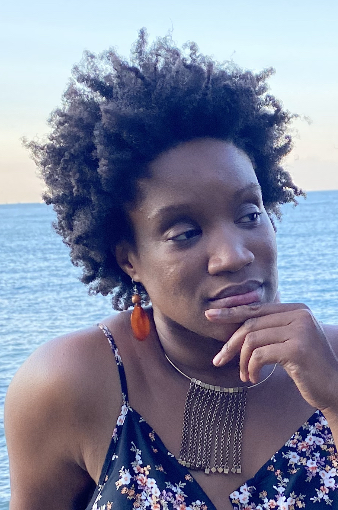
Lauren Williams is an arts administrator, writer, and educator whose work in museum education, youth development, and engagement began in her hometown as a program manager at the Birmingham Museum of Art. Following her time at the BMA, Lauren studied arts administration at Florida State University and installed public exhibitions with Tallahassee, Florida’s Council on Culture & Arts before transitioning to Chicago. While in Chicago, her work has centered on advancing the value and understanding of community engagement within arts organizations through deep relationship-building and the institutionalizing of principles and practices of long-lasting community-building. She continues this work through Sixty Inches From Center as the lead facilitator of organizational culture, care, and relationship nurturing, while ensuring that Sixty’s values align with its internal and external practices.
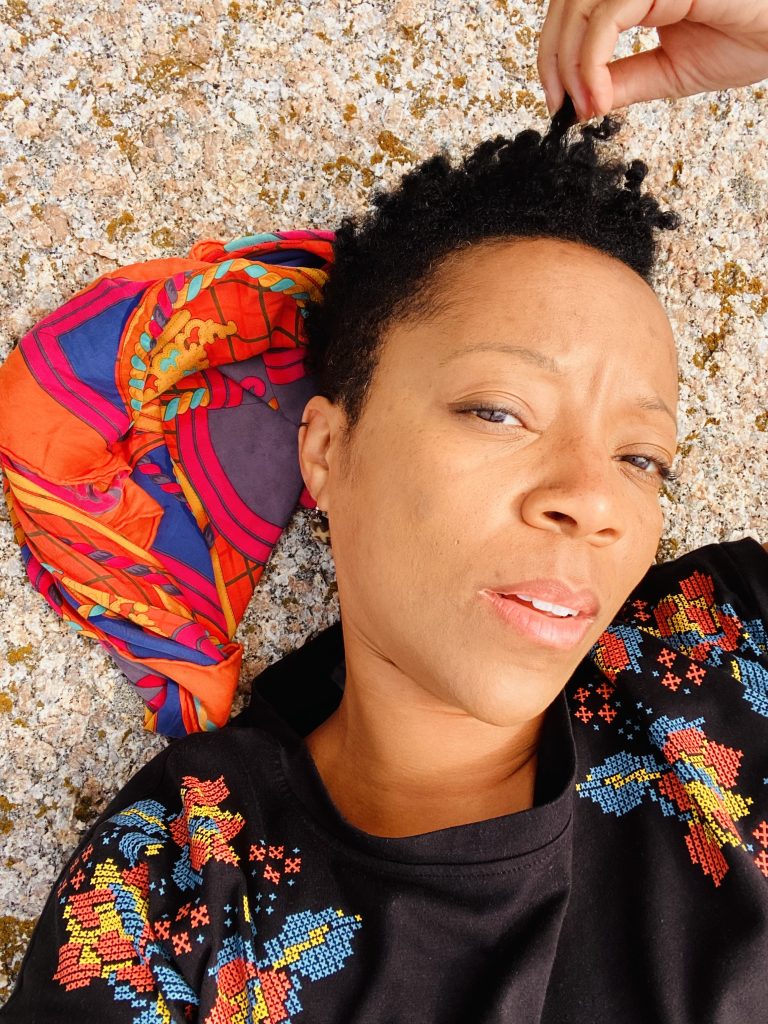
Tempestt Hazel is a curator, writer, and co-founder of Sixty Inches From Center, a Chicago-based collective of writers, artists, curators, librarians, and archivists who have published and produced collaborative projects about artists, archival practice, and culture in the Midwest since 2010. She has worked alongside artists, organizers, grantmakers, and cultural workers to explore solidarity economies, cooperative models, archival practice, and systems change in and through the arts. You can see more of her editorial, curatorial, and other projects at tempestthazel.com.
